A MERCY
By Toni Morrison
Knopf, 167 pp., $23.95
A Mercy is Toni Morrison’s most accessible novel since Beloved. That’s not to say that it is not without its challenges. The elliptical method employed in Love and Jazz is here, but the voices in this book are more beguiling and the story they tell, albeit from differing angles, is fast-moving and poignant.
The setting of the novel is 1680s America. The slave trade is a burgeoning business. Some whites (or “Europes,” as the captured Africans call them) refuse to take part in the selling of human beings. One such man is Jacob Vaark. Jacob only wants to expand his small farm and his small family — his sons keep dying shortly after birth — and it is on his patch of land that most of the novel’s action takes place. By concentrating on the denizens of one homestead, Morrison is able to limn the entire disorder of early America. It’s one of the reasons this short book is so powerful — Morrison’s deep and sympathetic focus on a handful of lives. Each chapter concentrates on one character, and as the book unfolds, the story is revealed, slowly, with magisterial grace. The end result is satisfying and stirring.
At the center of the family and the novel is Lina, a servant who is also a healer and midwife. She is the main conduit between the whites and blacks. There is also Florens, whose sections of the story are told first-person in a sort of broken poetry that is breathtaking. And there is the strange Sorrow, one of Jacob’s charity hires. She spends most of her time communicating with her imagined double, Twin. Also part of the story is Rebekka, Jacob’s wife, whose strength is tested when Jacob dies and she is left to run the farm.
 NOVIC | dreamstime.com
NOVIC | dreamstime.com
The strength of A Mercy is Morrison’s lucid eye, her uncanny ability to create character studies that are memorable and that, through her lapidary approach, tell a tale that is profound and important. In her hands, character is story. These lives, black and white, are enmeshed in a newborn chaos, present at the birth of a country full of both promise and violence.
Like William Faulkner, Toni Morrison has honed a personal experimental style that pays great attention to rhythm and diction. Like Faulkner, she is understated and cerebral while creating gothic grotesqueries in an agrarian setting. A Mercy, for all its brevity, will be celebrated and discussed along with Morrison’s best work, Beloved, Song of Solomon, and Sula. — Corey Mesler
Panic! The Story of Modern Financial Insanity
Edited by Michael Lewis
Norton, 385 pp., $27.95
For starters, Panic! is a collection of columns and stories by several authors and journalists, including Michael Lewis. That has not been made clear in the interviews I’ve seen on The Colbert Report and other places. It was therefore a surprise to me, at least, to find 20-year-old New York Times articles and a reprint of a chapter in one of humorist Dave Barry’s books in what I expected to be a new book by the author of Liar’s Poker, The Blind Side, and Moneyball.

So I started reading these “warnings and autopsies” of financial disasters with some concern — concern about the book, that is, not the subject matter. With all that’s going on, do you really need to catch up on the stock market crash of 1987 and the Internet bubble?
The short answer is no. Lewis includes too many frauds long forgotten, stock offerings that nobody needs to remember, and experts of the day sounding off on issues that were so hot then but are so cold now.
The first piece is an account from Time magazine of the 1987 stock market crash, which proclaims that “the desire of so many investors to make their own decisions has become a boon to discount stock brokerages.” There is a verbatim reprint of a two-paragraph squib in the 1997 New York Times headlined “Thailand Warns Currency Speculators.” There is an interview in 1999 from Frontline on the Russian economy, an eight-page list of dot-com companies, and an interview from Fortune in 2000 with blabbermouth James Cramer in which he says, “If I had something that I wanted to do to get people’s attention, I would do it on TV because it’s easier and cheaper and a lot more fun.”
How prophetic, I suppose.
Sprinkled among these pieces are recent magazine articles by Lewis himself, whose work is funny and insightful but not exactly in need of a collection just yet. That Internet thing, you know?
The final third of the book is called “The People’s Panic,” and it’s about the housing bubble and subprime mortgage collapse. I suspect this was to be the entire focus of the book at one point, but perhaps either Lewis or the publisher changed their mind and decided to get something on the shelf for the holiday season. Anyway, once again, the articles are either too dated or too familiar to anyone with an e-mail address and with friends who forward, without solicitation, their favorite “must read” stories.
Which is to say, of course, all of us. Our in-boxes already are clogged with this stuff. Let’s have another real book, Michael Lewis. — John Branston
The Elvis Encyclopedia
By Adam Victor
Overlook, 598 pp., $65
To start with the obvious: There are Elvis books. Hundreds? Nay, many thousands, including new ones annually — picture books, scrapbooks, tell-alls, repeat-alls, Elvis-and-me reminiscences by people who actually knew the King, Elvis-and-me reminiscences by people who may have sighted the King from a distance once, a ready stream of rip-off volumes, a ready stream of serious tomes by reputable critics, etc. All shapes and sizes — as many variations as there were arrows in the quiver of this astonishing artist and icon. And now there is The Elvis Encyclopedia, which, more than any previous compendium and more than most of them put together, gathers the essential information. There’s something for everyone here — for musicologists, fans, historians, idolaters, skeptics, and newcomers and, most of all, for a posterity that, clearly, will never diminish in its fascination with the man who derived from humble origins in Tupelo, Mississippi — which, like Memphis, Elvis Presley’s home base for most of his life, gets several entries all to itself. Tellingly, however, neither place gets quite the voluminous attention as does Graceland, his domicile, burial site, and de facto shrine.
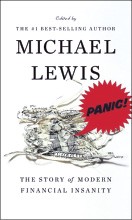
But all the locales germane to the life of Elvis get their due in this giant volume, as do the family members, acquaintances, fellow artists, and ancillary icons (notably Priscilla and the Colonel) who inhabited Presleyana. The songs, the movies, the concert sites, the recordings, the collaborators: They’re all here, chronicled in unprecedented detail, along with a galaxy of photographs — color, black-and-white, familiar and unfamiliar — that span the life and times.
Adam Victor, the editor/author of this volume, warmed up for the task with an impressive earlier volume, The Marilyn Encyclopedia, which aspired to similar completeness in depicting the life of screen queen Monroe. He’s outdone himself — and most competitors, past, present, or potential — with The Elvis Encyclopedia.
Midway in the volume comes a brief nod from Victor to Internet fanciers which concludes: “Anyone armed with a little patience and rudimentary search engine skills can find thousands and thousands of Elvis sites and in-depth information on practically anything even remotely Elvis-related.”
Or they can acquire this book and save themselves the trouble. — Jackson Baker
The English Major
By Jim Harrison
Grove Press, 255 pp., $24
Jim Harrison’s latest fictional effort, The English Major, offers a remarkable antidote to the gloom of recent times and far exceeds the limitations associated with a “road” novel. Cliff, Harrison’s sixtysomething character whose upended life is the novel’s subject, does embark on a journey of sorts. But for readers, it is coming to know this funny and irreverent narrator that makes Harrison’s book such a gem — one recently named a Notable Book of 2008 by The New York Times.
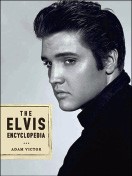
Cliff’s observations — sprinkled with hilarious accounts of his ex-wife Viv, his son (who overemphasizes every FIFTH word), his close friend AD (alcoholic doctor), and memories of his parents — are astonishingly astute. Though a high school teacher for years and a farmer even longer, Cliff still processes life as an English major, one doomed to be “high minded and low waged.” When Cliff and Viv cease to be a couple after 38 years of marriage, Cliff as artist and vagabond emerges.
Despite Cliff’s frequent recollections of Viv, it is really his dog Lola whom he misses the most. The impetus for Cliff’s emancipation comes early in the novel when he discovers he didn’t run over Lola but that she died of natural causes — that coupled with Viv’s news that she has sold their farm (which technically belongs to her mother and her).
The lost marriage, dog, and farm propel Cliff’s cross-country journey with a jigsaw puzzle of the Unites States on the backseat. As he crosses state lines, he intends to toss the cardboard piece representing each state from the window. More significantly, he will rename every state and state bird — liberating them from the banal names men have given them. As in: “Nebraska is the Cornhusker state, the western meadowlark the state bird (the same as North Dakota!), goldenrod, considered a noxious weed in northern Michigan, is the flower, and the ordinary ‘Equality Before the Law’ is the motto. Of course this was never quite true any place.”
Though a self-proclaimed geezer, Cliff knows much about modernity and wants little of it. Yet there is a hipness about Cliff, an endearing dismissiveness. When he settles in to restore his grandfather’s “shack” nestled in 40 acres of pasture in the hilly woods, he shares Keats’ fear that he won’t live long enough to finish his work. Whatever time does remain for Cliff, it most assuredly will be well spent as “an old body bent on a new life.”
— Lisa C. Hickman
The Oxford American Book of Great Music Writing
Edited by Marc Smirnoff
University of Arkansas Press, 421 pp., $34.95
Compared to mainstream music magazines, which tend to favor celebrity puff pieces and hundred-word album reviews, The Oxford American‘s nearly annual music issue stands out not only for the literary quality of its coverage or for the accompanying free CD but for the space it grants writers to explore aspects of Southern music, no matter how obscure or personal. So consider this volume a greatest hits: The magazine has collected some of the best essays from its pages into its Book of Great Music Writing, in which an array of writers cover nearly every permutation of Southern music.
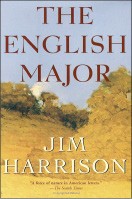
Appropriately, Peter Guralnick’s “Falling Into Place” sets the tone right away by detailing his beginnings as a music writer and explaining his general approach: “What I was trying to capture … was the feeling, not the technique.” Immediately following, Memphian Robert Gordon puts those principles into practice when he describes both the creation of and his experience listening to Leadbelly’s Last Sessions, Part One.
As the book examines jazz, country, rock, and even heavy metal, the writers favor the evocation of emotion rather than the explanation of technique. The late John Fergus Ryan’s matter-of-fact essay on Jerry Lee Lewis, commissioned but rejected by Esquire in 1970, portrays him as a weathered showman rather than the rabblerouser of legend. Equally revealing is Tom Piazza’s meeting with ornery bluegrass legend Jimmy Martin, who enlists the author to help him haul garbage in his limousine.
If there is a theme connecting these essays, it’s this: Music intersects with our lives in unique and unplanned ways. William Bowers’ obsession with the band My Morning Jacket gives him new insight into his grandfather’s and father’s fanatical listening habits. For novelist Carol Ann Fitzgerald, Bessie Smith provides the soundtrack for a post-breakup road trip and a near hookup with a female friend.
Ultimately, this book isn’t about music or even music writing. It’s about the people who listen so closely but can’t drown out the rest of the world. — Stephen M. Deusner
The Fireside Cook Book
By James Beard
Simon & Schuster, 322 pp., $30
In the blue-collar world of my youth, cooking was no-nonsense. My mom threw together meat loaf or macaroni and cheese without recipes in much the same way her mother did. When Mom needed a little help, she consulted two books: The Joy of Cooking by Irma Rombauer or The Fireside Cook Book by James Beard, acclaimed then — and now — as the dean of American cooking.
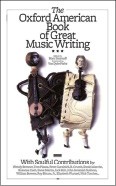
The Joy of Cooking is still on Mom’s laundry-room shelf, but The Fireside Cook Book disappeared decades ago, snagged, I suspect, by one of my sisters. How fortunate for me that Simon & Schuster has released in time for the holidays an anniversary edition of Beard’s classic cookbook. Published in 1949, the new edition replicates the first, including the book’s jacket (which opens into a charming and colorful chart “to decorate your kitchen or game room”) and the book’s mid-century illustrations by Alice and Martin Provensen. Even the title uses the original “cook book” spelled as two words.
Nostalgic? Yes, of course, but don’t dismiss the book as a culinary collectible for baby-boomers. Younger cooks also will find much to appreciate, especially Beard’s comprehensive approach to food selection, preparation, and menu planning.
As America’s first foodie (he had a television show in 1946) and locavore (he was passionate about seasonal produce), Beard was a prolific writer, traveler, and consultant. But he loved teaching best, a proclivity guiding his cookbook’s organization and personality. Each chapter offers cooking strategies, recipes, and variations. For instance, the chapter on poultry begins with an explanation of the differences between broilers, fryers, roasters, fowl, and capons. (Hint: It’s about age, sex, and weight.) Next is a recipe for chicken sauté followed by such variations as mushroom, herbed, Italian, paprika, and Amandine.
Altogether, Beard compiled more than 1,200 recipes for The Fireside Cook Book, but his droll and sensible advice is equally worthwhile. “Drink the wine that you like; be it red or white, sweet or dry,” he said about wine selection. “They are extravagantly overrated” was his opinion on fruit cups. “You will certainly be misled by the number of servings on the package,” he warned about frozen foods. “There is absolutely no substitute for the best,” he insisted about ingredients, but the words seem more applicable to James Beard himself. — Pamela Denney
Seven Days in the Art World
By Sarah Thornton
Norton, 256 pp., $24.95
Seven Days in the Art World is exactly that.
Writer Sarah Thornton’s latest book chronicles — at times, hour by hour — different aspects of the international art world.
She visits an auction at Christie’s, an art market, the offices of Artforum magazine, an art school, and an artist’s studio, among others. That’s not to say that the book is only for contemporary art lovers, however.
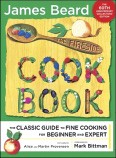
Like her first book, Club Cultures, which looked at the world of raves and dance clubs, Seven Days is a primer on a particular subculture. Instead of ravers, this time she focuses on the people who create, sell, and buy art.
Thornton writes in an accessible, knowledgeable voice, and her inclusion of tiny details provides nuance and texture. During the visit to the artist’s studio, for example, she even goes so far as to record who was sitting where on the plane. (The artist was in first class, the dealers weren’t far behind, and the museum staff were in economy. No word, however, on where the author herself sat.)
In many ways, Seven Days is also a study of a market where value is as amorphous as, and more subjective than, the dollar itself. In recent years, more work by living artists has been sold at auction, and the time between when a work leaves a studio and winds up on the resale market has gotten much shorter.
“Primary dealers usually try to avoid selling to people who will ‘flip’ artworks at auction, so they don’t lose control of their artists’ prices,” Thornton writes. “Although high values at auction may allow a primary dealer to raise the prices of an artist’s current work, these monetary ranks can play havoc with the artist’s career. … A record price breathes life into the perception of an artist’s oeuvre, whereas a buy-in [when the auction fails to meet the work’s reserve price] is like a visit from the grim reaper.”
As one of Thornton’s interviewees puts it, “Only two professions come to mind where the building in which transactions take place is referred to as a house.”
If art is a gamble, Seven Days in the Art World is a quick and interesting look at the odds. — Mary Cashiola
The 12-Step Bush Recovery Program:
A Lifesaving Guide to Shaking Off the Horrors of the Last Eight Years, with Practical Advice on Relapse, Remission, and Recounts
By Gene Stone
Villard Books, 121 pp., $10 (paper)
The Future’s So Bright,
I Can’t Bear To Look
By Tom Tomorrow
Nation Books, 153 pp., $16.95 (paper)
For the political lefties on your gift list, here’s a pair of books that will have them reeling over the nonsense of the last eight years. (Don’t worry: They’ll love it.)
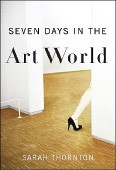
Gene Stone, author of The Bush Survival Bible, has followed that title up with the The 12-Step Bush Recovery Program. The book is fashioned around the AA model, with chapters such as “Acknowledge the Problem,” “Find a Sponsor,” “Make Amends,” and so forth. But don’t be fooled. Satire is the book’s weakest point (the jokes in the “Detoxification” section are, to the last one, groaners), but within Stone’s approach there’s some serious business about the missteps of the Bush administration addressed at various points by writers actively involved in the liberal cause.
Matthew Yglesias, a senior editor at the Center for American Progress, tackles the media’s fumbling during the Bush administration and provides tips on never being fooled again, while Gregory Greene, a documentary filmmaker, discusses America’s self-destructive dependence on oil and gives some thought to sidestepping oil consumption. And so it goes: remembering the W. mess with guidance to being a better citizen.
Speaking of a better citizen, and in the same vein, we have cartoonist Tom Tomorrow, who’s been a staple of alternative newsweeklies across the country for nearly two decades. Tomorrow is so attuned to the ridiculousness of the political quirks of this nation and the players involved that he probably can’t sleep at night.
In The Future’s So Bright, a compilation of Tomorrow’s strips from the past three years, a tale is spun that is not an inch more fantastical than the one fed to us by American politicians: Hillary is blue-collar; Karl Rove is an innocent patsy; Harry Reid stands up to the Republicans; and on and on. (Okay, to be fair, Tomorrow’s version does include the occasional appearance by a talking penguin and space aliens.) Frighteningly enough, a read through the book reveals that everything’s changed and everything remains the same.
Just the same: Happy holidays and happy new year. — Susan Ellis
Crisis: 40 Stories Revealing the Personal, Social, and Religious Pain and Trauma of Growing Up Gay in America
Edited by Mitchell Gold and Mindy Drucker
Greenleaf Book Group Press, 369 pp., $23.95
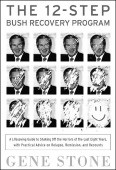
Long before the national media jumped all over former New Jersey governor Jim McGreevey’s public outing in 2004, a teenage McGreevey considered suicide when he realized his church considered his same-sex attraction sinful. A barely pubescent Ari Gold, now a famous songwriter and producer, attempted to reconcile his early gay feelings by sleeping with a strange 35-year-old man. And when young furniture designer Mitchell Gold’s planned sleeping-pill suicide didn’t work, he considered driving a car off a cliff. Crisis, co-edited by Gold with Mindy Drucker, tells these and other stories of 40 gay men and lesbians who struggled with social and religious discrimination as they wrestled with same-sex attraction in their early years.
Gold’s collection of essays — featuring a mix of celebrities, politicians, religious figures, and ordinary people — couldn’t have come at a better time. After the recent elections, in which Californians voted to ban gay marriage and Arkansans approved a measure to prevent gay couples from adopting children, it’s important for straight folks to understand the danger of placing a stigma on a person’s natural desires. Just check out the stories here of U.S. congressman Barney Frank, former NBA star John Amaechi, or Human Rights Campaign leader Joe Solmonese to see what discrimination can do to a young person.
Though many of the essay writers grew up in the not-so-gay-friendly 1960s and ’70s, the book also features contemporary stories from young men and women whose religious upbringing was at odds with their coming out.
Take Jared Horsford. The 21-year-old Texas Tech student began attending ex-gay ministry meetings in the hopes of shaking off what he believed was a shameful attraction to the same sex. He began cutting the words “fag” and “I hate you” into his chest every time he felt attraction for another man. When Horsford approached an ex-gay counselor about his cutting problem, he was told the self-destruction was just a way of “fighting his desires.”
Crisis should be mandatory reading for all high school students. It may be too late to change the minds of older readers. But if this book can reach the next generation, perhaps the days of gay teens contemplating suicide or engaging in other self-destructive behavior will be numbered. And as Mitchell Gold recently told Charlie Rose, Crisis could be the most important book you give this Christmas. — Bianca Phillips
FreeDarko Presents … The Macrophenomenal Pro Basketball Almanac
Bloomsbury, 219 pp., $23
There’s never been a basketball book — maybe even a sports book — quite like The Macrophenomenal Pro Basketball Almanac, the first print endeavor of the cult-favorite NBA blog FreeDarko.com. Yes, the site is named after the oft-maligned Serbian big man currently riding the bench for the Memphis Grizzlies. But for certain nontraditional basketball fans — the egghead, the hipster, the ironist, the amateur culture critic — this might be the hoops book you’ve been waiting your whole life for.
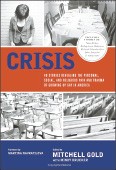
FreeDarko’s opus takes a textbook form, right down to a closing glossary that isn’t a guide to the rest of the book so much as it is an informative but critical portrait of the colorful NBA world the book’s collective authors revel in. Sample entry: “Basketball is jazz” — Specious claim frequently made by academics who have never heard James Brown or Rakim.
The book opens with a “manifesto” that proffers a notion of “liberated fandom,” taking such provocative stands as frowning upon too much concern with mere wins and losses and deriding the tunnel-vision fan focus on the fate of a favorite team: “We assert our right to be amused by non-Champions. Some of the most masterful moves to the basket yield not points and die a replayless death, excluded forever from the Kingdom of Highlight Posterity. These we reclaim in the name of the People.”
Instead, the FreeDarko crew celebrates a notion of pro hoops as an arena of athletic spectacle, geometric precision, unintentional comedy, outlandish personalities, and rich sociocultural meaning. It does so with player profiles that mix on-court insights with psychoanalysis and cultural critique, charts and graphs of oddball brilliance, and beautiful, almost whimsical illustrations.
Memphis hoops from Penny Hardaway to current Grizzlies honcho Chris Wallace are well-represented, but my favorite local connection is in a priceless section on “Jerseys for Every Occasion,” in which the Griz-era jersey of point guard Jason “J-Will” Williams is recommended to Civil War reenactors playing Confederate soldiers: “An outfit for the proud but confused.” — Chris Herrington
Watching the Watchmen
By David Gibbons
Titan Books, 256 pp., $39.95
Watchmen was released by American publisher DC Comics and created by a pair of Brits, writer Alan Moore and artist Dave Gibbons. It was a critical and commercial smash in 1986, and when it was collected into one edition, it became one of the first graphic novels.
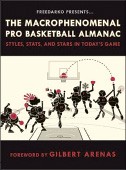
Gibbons lays out the scene in his expansive, generous, gorgeous book, Watching the Watchmen. In it, Gibbons shares a personal history of Watchmen, from the first time he met Moore to the vantage point of 2008. Hundreds of sketches, storyboards, letters, scripts, and ephemera trace the evolution of Watchmen from the first brainstorming session to the final image of the book.
What’s Watchmen about? Gibbons provides the answer in Watching the Watchmen, via a letter from Moore about the universe they were creating. Moore writes, “To see what I’m trying to get at, you have to try and imagine what the presence of superheroes would actually do the world, both politically and psychologically.”
Three years ago, DC came out with Watchmen: The Absolute Edition, a reproduction of the original work, with updated coloring and stuffed with scripts and other extras. Watching the Watchmen is a perfect complement to it. It looks fine on the shelf next to its papa. — Greg Akers
The Best of Sexology
Edited by Craig Yoe
Running Press, 480 pp., $14.95
If you’re a geek who likes sex, The Best of Sexology is the book you’ve wasted the better part of your adult life waiting outside the comic book and/or record shop for. Seriously. It’s a stimulating, unintentionally hilarious read from the opening dedication to Bettie Page to the closing graphs describing the differences between normal and abnormal vampire eroticism.
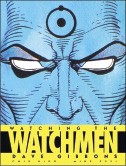
The handsome cover makes the book look like a sticky treasure rescued from a revolting box full of silverfish-eaten magazines in your great uncle the pervert’s attic. It collects essays about everything from homosexual chickens to Hitler’s debilitating genital issues and (of course) the curious coital customs practiced by Eskimos and the sexually uninhibited inhabitants of South Sea islands. It’s all excerpted from Sexology, an illustrated “Magazine of Sex Science” that started publication in 1933 and remained popular until the full-frontal porn of the 1960s and ’70s.
Sexology the magazine was founded by Hugo Gernsback, who realized that while everybody had sex, talked about sex, and thought about sex, nobody was writing about sex for a commercial market. He thought there might be an audience for a periodical featuring multibreasted women and sword-fighting transvestites alongside dryly scientific-ish articles.
Sexology anticipated supermarket tabloids with sensational stories about people born with tails, wife-swapping key parties, high-priced call girls, low-down perverts, murderers, exhibitionists, and human oddities. But tucked amid all the silliness were a handful of engaging articles on topics such as the evolution of the chastity belt.
The Best of Sexology also collects some classic erotic advertising and columns, such as “Your Sex Questions Answered.” Example: Is the clitoris disappearing? Read and find out! — Chris Davis
Dressing the Part
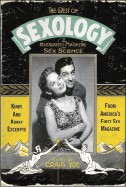
You can blame it on Buick, and one of its car-company “industrial shows” back in the 1950s. That’s when André Bruce Ward, a teenager at the time in his hometown of Flint, Michigan, saw first-hand and backstage what went into mounting a musical production, and not the least of what went into it were the costumes.
And now — decades later, hundreds of plays and musicals later, 17 Ostrander Awards later — here’s André, a volume of Ward’s wardrobe sketches for Theatre Memphis, where for the past 30 years he’s been the in-house go-to guy when it comes to costuming actors and, on occasion, when it comes to outfitting the stage itself as a set designer. The results, judging from the sketches and the production photographs collected here, have been never less than dazzling and endlessly inventive.
Or do you not remember Ward’s feathered showgirls in Follies (1995)? His elegant creations for A Little Night Music (2004)? The five costume changes (each!) for the tap-dancing Broadway “babies” in 42nd Street (2002)?
For the real royal treatment, however, see Ward’s wide range of sumptuous period pieces for shows such as Camelot (1978), Medea (1980), The King and I (1981), Anne of the Thousand Days (1983), Macbeth (1985), Caesar and Cleopatra (1987), and A Man for All Seasons (1994).
Andre: Thirty Years of Costume Design at Theatre Memphis, which sells for $29.99, was itself designed by Memphian Michelle Simkin. Actor Bennett Wood served as editor. Debbie Litch, Theatre Memphis’ executive producer,
is listed as publisher. And all proceeds
from the sale of André go to support
TM’s artistic endeavors. As a tie-in to
the book, note cards (12 to a package
and featuring Ward’s costume sketches)
sell for $12.99.
For the holidays and for that local
theater lover on your list, think of the man
for all (theater) seasons: André, as in Ward,
as in “wardrobe.” — Leonard Gill
Classic Country Singers
By Douglas B. Green
Gibbs Smith, 143 pp., $24.99

Old-time country music performers often referred to each other and their audiences as “family,” and Douglas B. Green’s Classic Country Singers extends the metaphor in this compilation devoted to stars of the genre in the formative years of 1925 to 1955.
Singers is published in a scrapbook format with equal emphasis on pictures and biographical details that focus on musical origins and influences on later performers. In addition to studio photographs, reproductions of album covers, songbooks, and sheet music are included, many of them bearing autographs, owners’ signatures, resale price tags, and the occasional scribble of perhaps a heedless child or someone testing the readiness of a pen to write. The down-home motif is furthered by the pastel Harlequin, black-and-white beribboned dust jacket, which itself is a replica of Gene Autry’s album Red River Valley.
Green is the lead singer of Riders in the Sky and a member of the Western Music Hall of Fame, so it should come as no surprise that his entries lean heavily toward the cowhand, as opposed to the plowboy, side of the business. Tactful though he is, he seems to make the argument that Western is the greater part of Country.
Distinctions aside, Classic Country Singers is a pleasant piece of history and nostalgia. If it makes us wish for an accompanying CD bringing the old voices back to life, it has succeeded. — Linda Baker
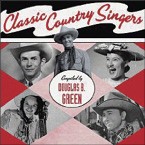
 NOVIC | dreamstime.com
NOVIC | dreamstime.com 












